You are using an out of date browser. It may not display this or other websites correctly.
You should upgrade or use an alternative browser.
You should upgrade or use an alternative browser.
❓Your Mineral Identification Questions answered here
- Thread starter user 4386
- Start date

Help Support Prospecting Australia:
This site may earn a commission from merchant affiliate
links, including eBay, Amazon, and others.
- Joined
- May 27, 2018
- Messages
- 1
- Reaction score
- 0
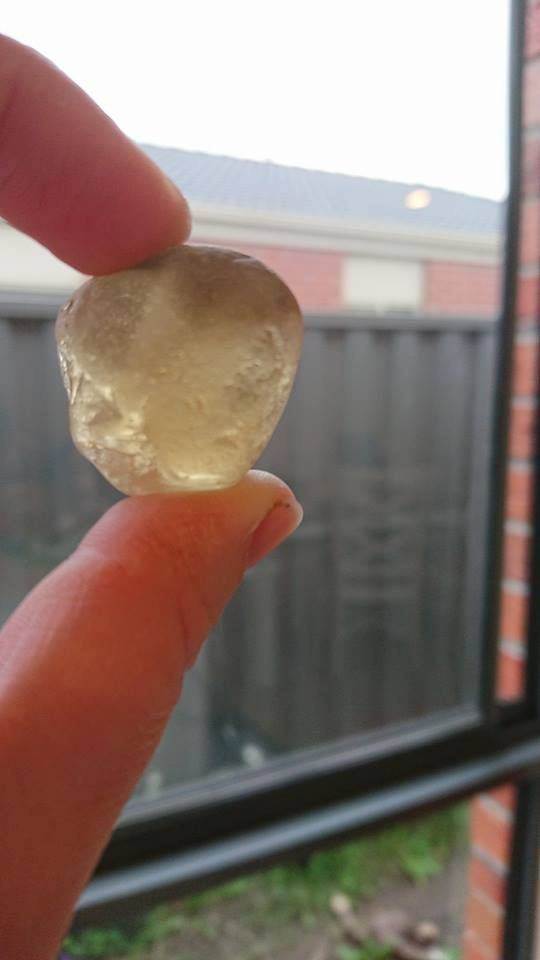
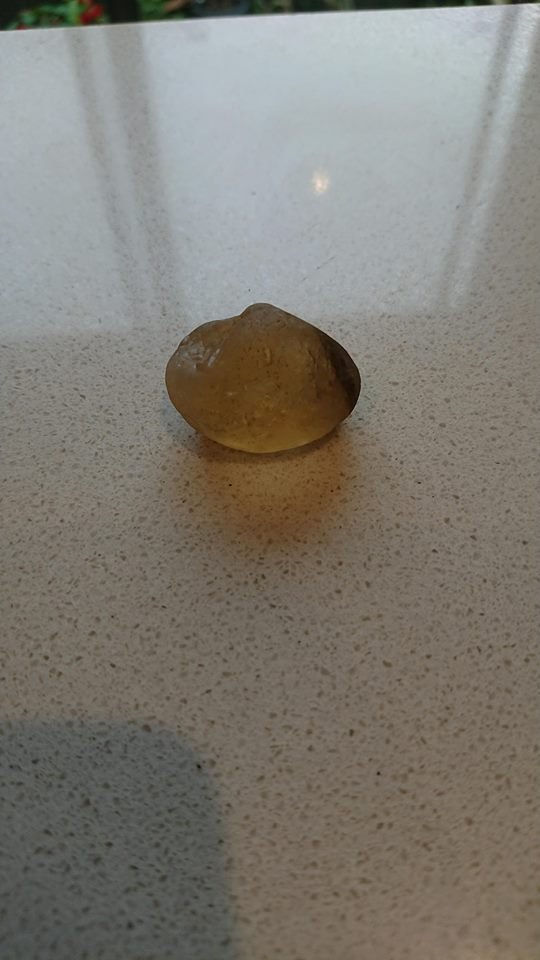
Hi all, we went to Beechworth this weekend and found this, could anyone Id this please and thank you
Smokey Quartz...
LW...
LW...
Elliott
Elliott
Hey everyone!
Just wanted to pop in and say hi. I went for a dig around the creek on my property, and actually I found a really neat little item;
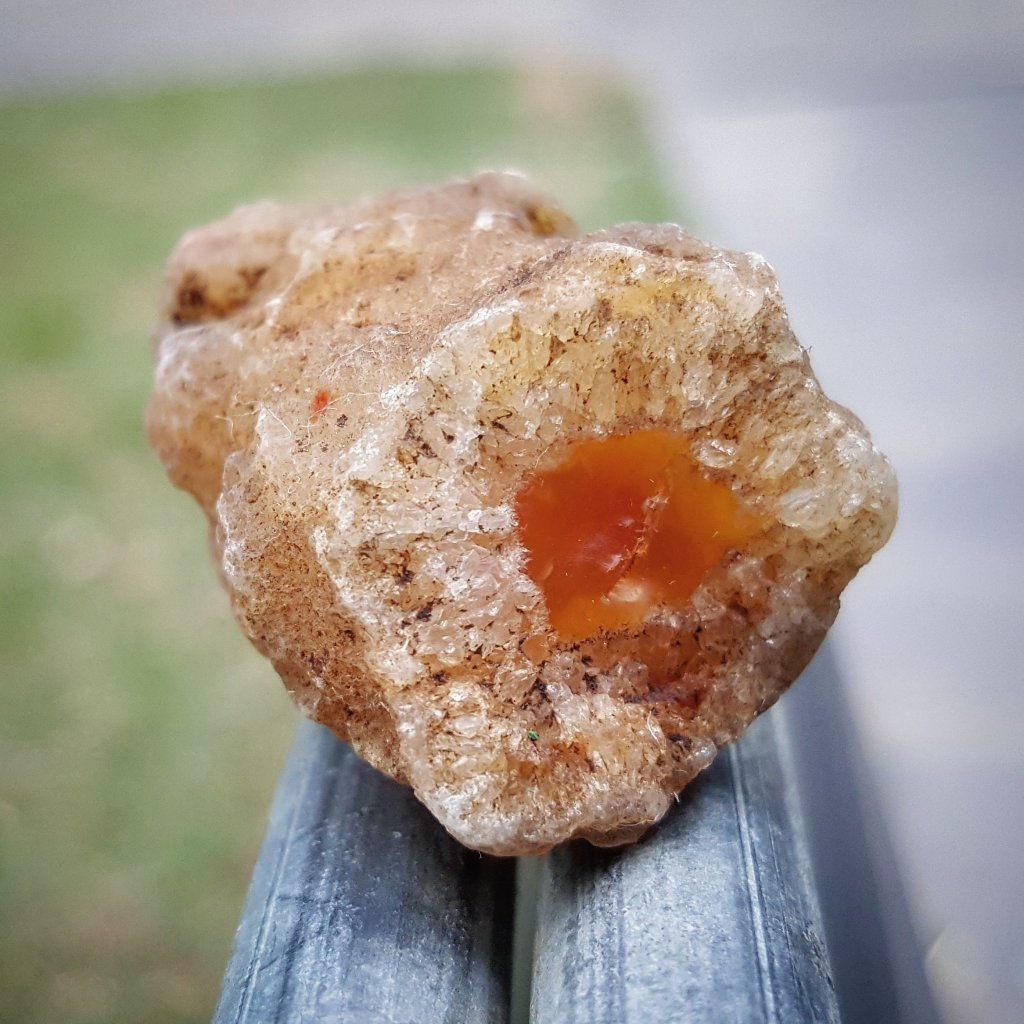
I ws just very curious as to what I am looking at. It's like the quartz is growing outward of the inner core, but what would that core be? How would it form? It's just so beautiful, and I never thought I would find anything like this in my own back yard!

Just wanted to pop in and say hi. I went for a dig around the creek on my property, and actually I found a really neat little item;

I ws just very curious as to what I am looking at. It's like the quartz is growing outward of the inner core, but what would that core be? How would it form? It's just so beautiful, and I never thought I would find anything like this in my own back yard!
- Joined
- May 1, 2014
- Messages
- 1,958
- Reaction score
- 2,530
Nice bit of chalcedony there Elliot! The core is what I wouod probably call "carnelian". It looks like your piece might possibly be the opposite to nearly all the same material that I have found, mine are typically only brightly coloured orange or red in a1mm or so thin skin on the outside of the nodule while inside is translucent white - nicfe looking specimens but dissapointing to try and cab as the colour dissapears. Yours might well be coloured right the way through and worth doing somethjng witht, though its also a nice specimen as is.
Elliott
Elliott
Thank you for the information Lefty!! I suppose me asking 'what is this' might seem daft to those who know better, or maybe find this sort of thing common, but I am truly fascinated by what I see. It's great to be able to put a name to it and then do some of my own research into what it is and how it's formed  I'm surprised by this find because I've really never found anything in our creek beyond some really beautiful petrified wood... It spurs me on to do some more scratching around but there are sooo many tree roots where I found this piece, it's not funny - lots of hills though, probably got washed out over the years and deposited hmmm.
I'm surprised by this find because I've really never found anything in our creek beyond some really beautiful petrified wood... It spurs me on to do some more scratching around but there are sooo many tree roots where I found this piece, it's not funny - lots of hills though, probably got washed out over the years and deposited hmmm.
You mention it could be worth doing something with - what kinds of things would you do with something like this? I'm curious
There is a mountain range 15 minutes from me I would love to go back to and dig around on. It's owned by someone we sold some property for and I was there for coffee one day - you could kick around in untouched hillside and find huge chunks of bubbly quartz and agate just waiting to be plucked... The ranges look like ancient volcanic formations, I can only imagine what might be lurking further down
You mention it could be worth doing something with - what kinds of things would you do with something like this? I'm curious
There is a mountain range 15 minutes from me I would love to go back to and dig around on. It's owned by someone we sold some property for and I was there for coffee one day - you could kick around in untouched hillside and find huge chunks of bubbly quartz and agate just waiting to be plucked... The ranges look like ancient volcanic formations, I can only imagine what might be lurking further down
- Joined
- May 1, 2014
- Messages
- 1,958
- Reaction score
- 2,530
No worries mate :Y: Ill answer as best I can, Ive been and avid fossicker for decades but Goldirocks is a geologist and is best placed to answer many questions.
I cant get to the geo map of your area until teenage son gets off the main computer but I suspect it will transpire thatyour area is dominated by felsic volcanic geology. That is, old lava of a chemistry high in felsdspar and silica. Eastern QLD and eastern NSW in particular are heavily composed of ancient igneous rocks and I recall seeing volcanic plugs sticking up all over your area whenever I drive down to Brissie.
Agates, jaspers and chalcedonies are often not uncommon in such areas. An area of felsic volcanoes near me up here in in central QLD produces, thundereggs, agate, jasper, chalcedony and loads of petrified wood, often with brightred or orange chalcedony growing over and through it.
If that piece it that colour all the way through it would make a beautiful cabochon( the smooth , domed stones you sometimes see in jewellery settings. I've been wondering about a faceting design i have for translucent materials but have never tried it. But its a nice specimen as aswell.
And i dont think any volcanoever spat out just one single piece of chalcedony, where theres one bit thereslikely to be more.
Cheers
I cant get to the geo map of your area until teenage son gets off the main computer but I suspect it will transpire thatyour area is dominated by felsic volcanic geology. That is, old lava of a chemistry high in felsdspar and silica. Eastern QLD and eastern NSW in particular are heavily composed of ancient igneous rocks and I recall seeing volcanic plugs sticking up all over your area whenever I drive down to Brissie.
Agates, jaspers and chalcedonies are often not uncommon in such areas. An area of felsic volcanoes near me up here in in central QLD produces, thundereggs, agate, jasper, chalcedony and loads of petrified wood, often with brightred or orange chalcedony growing over and through it.
If that piece it that colour all the way through it would make a beautiful cabochon( the smooth , domed stones you sometimes see in jewellery settings. I've been wondering about a faceting design i have for translucent materials but have never tried it. But its a nice specimen as aswell.
And i dont think any volcanoever spat out just one single piece of chalcedony, where theres one bit thereslikely to be more.
Cheers
- Joined
- May 1, 2014
- Messages
- 1,958
- Reaction score
- 2,530
Here's a cabochon cut from a very similar material to yours that I set in a pre-made 925 sterling silver pendant. If your piece is coloured right the way through, you could expect it to look something like this (can't post the photo here so here's a link to it instead)
https://www.prospectingaustralia.com/forum/viewtopic.php?id=9437
This one is only small, it was only the tip of a much larger piece that was coloured right through, the rest of the piece was as usual - coloured on the outside and colourless inside
The material you have there is quite hard and tough and takes on a high polish - perfect for cabbing.
https://www.prospectingaustralia.com/forum/viewtopic.php?id=9437
This one is only small, it was only the tip of a much larger piece that was coloured right through, the rest of the piece was as usual - coloured on the outside and colourless inside
The material you have there is quite hard and tough and takes on a high polish - perfect for cabbing.
- Joined
- May 1, 2014
- Messages
- 1,958
- Reaction score
- 2,530
Is this your area here Elliot?
Zoom in/out in top left hand corner of map. Large areas of volcanic geology of more than one kind, represented by the purple and bright yellow patches (click on the areas for more info).
Purple area:
Bright yellow areas:
I would think that your find is more likely associated with the purple areas, even if your exact spot is outside it. Goldirocks would be able to tell you more.
Zoom in/out in top left hand corner of map. Large areas of volcanic geology of more than one kind, represented by the purple and bright yellow patches (click on the areas for more info).
Purple area:
North Arm Volcanic Group
Age: Late Triassic (237 - 201.3 Ma)
Stratigraphic name: North Arm Volcanic Group
Description: Andesite, rhyolitic volcaniclastics and flows, minor sediments
Comments: igneous felsic-intermediate volcanic; synthesis of multiple published descriptions
Lithology: igneous felsic-intermediate volcanic
Bright yellow areas:
mafic volcanic rocks 38495
Age: Cenozoic (66 - 0 Ma)
Description: Volcanic rocks, predominantly mafic; basalt, trachyte, trachybasalt, trachyandesite, leucitite, basanite, nephelinite, limburgite, rhyolite, tuff and high level intrusives; rare volcaniclastic sediments
Comments: igneous mafic volcanic; synthesis of multiple published descriptions
Lithology: igneous mafic volcanic
I would think that your find is more likely associated with the purple areas, even if your exact spot is outside it. Goldirocks would be able to tell you more.
Elliott
Elliott
That is absolutely fascinating!! Thank you for such detailed information  You are spot on, that is my area. Where I live sits in a purple zone, and 5 minutes up the road where I usually fossick and have found all of my nicest pieces, is in a yellow zone. I guess given the close proximity of both, what is found in one could likely be found in the other given the geology here and the way the waterways all wash from high up and run right down through my property. That map is really handy, I'm loving understanding the geological history of my area and what can be discovered within it - the things that people don't know are right under their noses!!
You are spot on, that is my area. Where I live sits in a purple zone, and 5 minutes up the road where I usually fossick and have found all of my nicest pieces, is in a yellow zone. I guess given the close proximity of both, what is found in one could likely be found in the other given the geology here and the way the waterways all wash from high up and run right down through my property. That map is really handy, I'm loving understanding the geological history of my area and what can be discovered within it - the things that people don't know are right under their noses!!
Also I saw your post, that pendant looks stunning! I also saw your earlier post showing all of the pieces you collected and used too, that's one hell of a collection. I don't think I could have brought myself to cut and polish any of them haha, I'm so truly fascinated by the natural structures and growth of these minerals. I would probably be that one weird person that makes a pendant that just had a rugged untouched piece of agate sticking out of it hahaha
Really really appreciate all of the information, thank you again
Also I saw your post, that pendant looks stunning! I also saw your earlier post showing all of the pieces you collected and used too, that's one hell of a collection. I don't think I could have brought myself to cut and polish any of them haha, I'm so truly fascinated by the natural structures and growth of these minerals. I would probably be that one weird person that makes a pendant that just had a rugged untouched piece of agate sticking out of it hahaha
Really really appreciate all of the information, thank you again
- Joined
- May 1, 2014
- Messages
- 1,958
- Reaction score
- 2,530
No worries mate :Y:
Yep, I would expect there to be some overlap - waterways and drainages passing through one type of geology and depositing stuff in the one next door etc. I've also seen little pockets of one kind within an area dominated by a different kind. Apparently that's quite common.
You're right that people don't often realise what is right under their noses. My family had small miners claims behind Rubyvale when I was a kid. I had always thought the Anakie gemfields to be some kind of super-rare occurrence with gems of any kind only being found in a few tiny, special spots over the whole continent. Then I started picking the brains of geologists and realised that much of the east coast and near-inland areas of eastern Australia are made up of great masses of ancient igneous formations, both extrusive magma spewed from volcanoes and also intrusive igneous rocks like granite, magmatic in origin but solidified while still beneath ground. Both of these types of igneous rocks can be the hosts for all manner of gemmy things, depending on the chemistry. Places like the Anakie/Rubyvale gemfields, Lava Plains in far north QLD and the New England area in NSW are richer than normal hot spots but potential for gemmy type things is much more widespread than is commonly realised.
Felsic, high-silica type volcanics can produce agates, chalcedonies, thundereggs etc. Mafic volcanics (high in magnesium and iron) such as your bright yellow zone can potentially be the host for things like sapphires. It doesn't mean that there necessarily are any there in any quantity or even at all but when the geology is right, you never know.....
Nothing wrong with a pendant made from something in it's natural shape, can look pretty cool sometimes, eg well-formed quartz crystals, small gold nuggets etc
Cheers
Yep, I would expect there to be some overlap - waterways and drainages passing through one type of geology and depositing stuff in the one next door etc. I've also seen little pockets of one kind within an area dominated by a different kind. Apparently that's quite common.
You're right that people don't often realise what is right under their noses. My family had small miners claims behind Rubyvale when I was a kid. I had always thought the Anakie gemfields to be some kind of super-rare occurrence with gems of any kind only being found in a few tiny, special spots over the whole continent. Then I started picking the brains of geologists and realised that much of the east coast and near-inland areas of eastern Australia are made up of great masses of ancient igneous formations, both extrusive magma spewed from volcanoes and also intrusive igneous rocks like granite, magmatic in origin but solidified while still beneath ground. Both of these types of igneous rocks can be the hosts for all manner of gemmy things, depending on the chemistry. Places like the Anakie/Rubyvale gemfields, Lava Plains in far north QLD and the New England area in NSW are richer than normal hot spots but potential for gemmy type things is much more widespread than is commonly realised.
Felsic, high-silica type volcanics can produce agates, chalcedonies, thundereggs etc. Mafic volcanics (high in magnesium and iron) such as your bright yellow zone can potentially be the host for things like sapphires. It doesn't mean that there necessarily are any there in any quantity or even at all but when the geology is right, you never know.....
Nothing wrong with a pendant made from something in it's natural shape, can look pretty cool sometimes, eg well-formed quartz crystals, small gold nuggets etc
Cheers
Danbob
Danny
G'day,
Long time lurker, first time poster.
I enjoy trying to identify the various minerals etc presented here from time to time (I'm usually incorrect) and I was wondering if anyone wants to have a stab at identifying some of my own unidentified pieces from the Illawarra region?
Found near a local beach, I'm thinking this first one may be rhyolite. The stone is very hard.
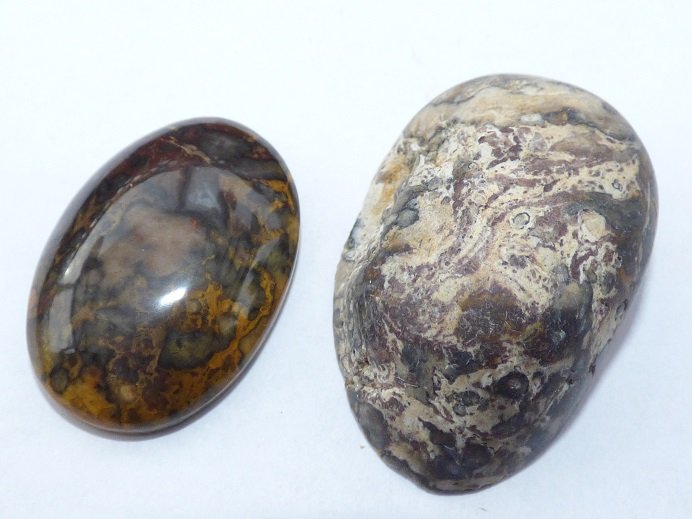
Also found near a local beach, I call this one my choc-honeycomb stone (the cabbed portion looks nearly edible!). Also quite hard - possibly a jasper?
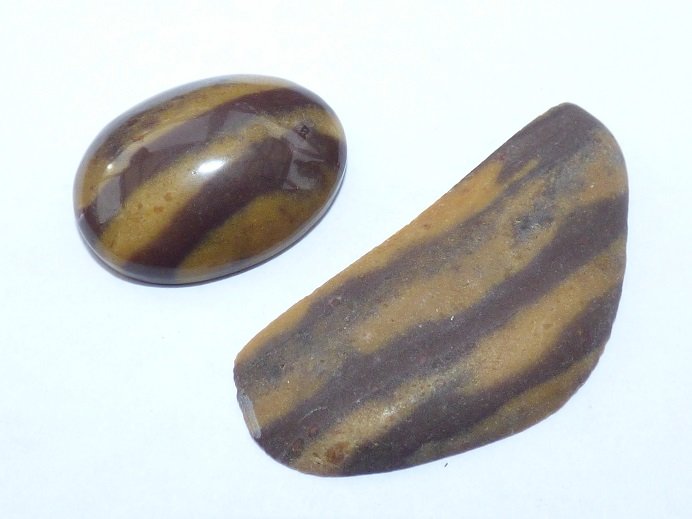
I suspect that this very soft piece is an interesting variation on one of the plentiful mineral concretions found about the Illawarra escarpment (where it was found).
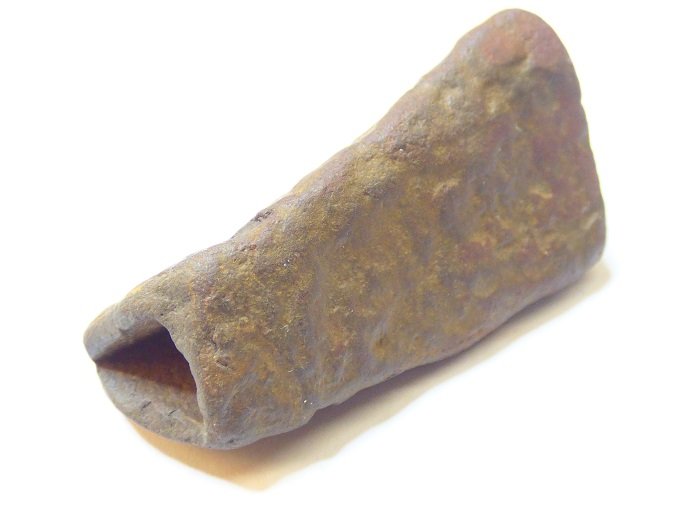
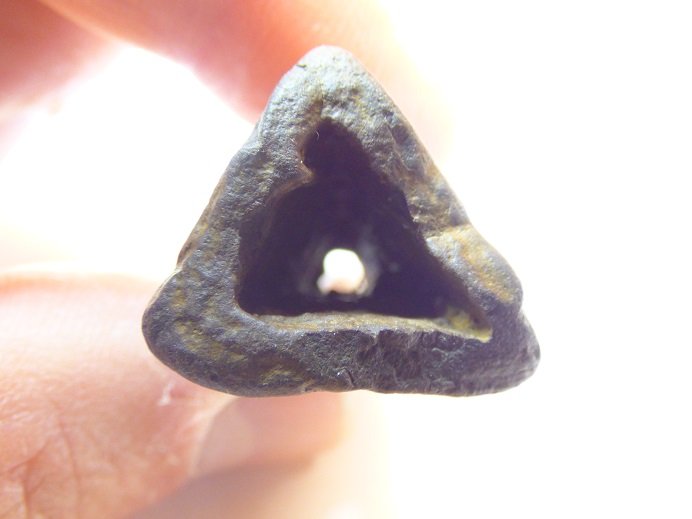
This one I'm calling for a bornite style stone. It was found high up a local creek and fits nicely in the palm of my hand.
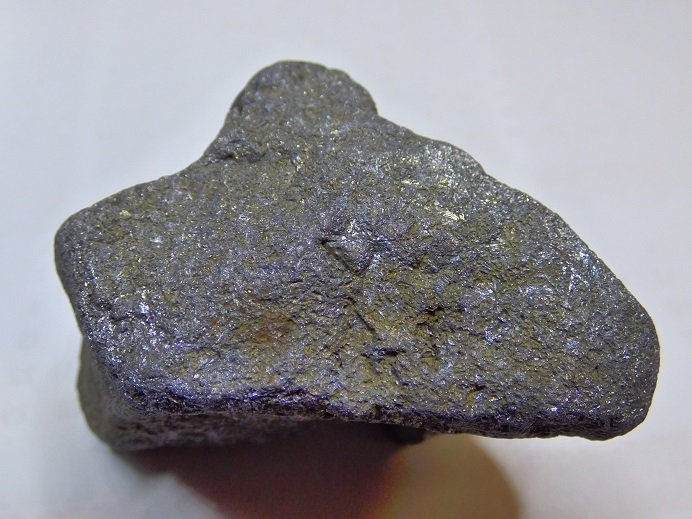
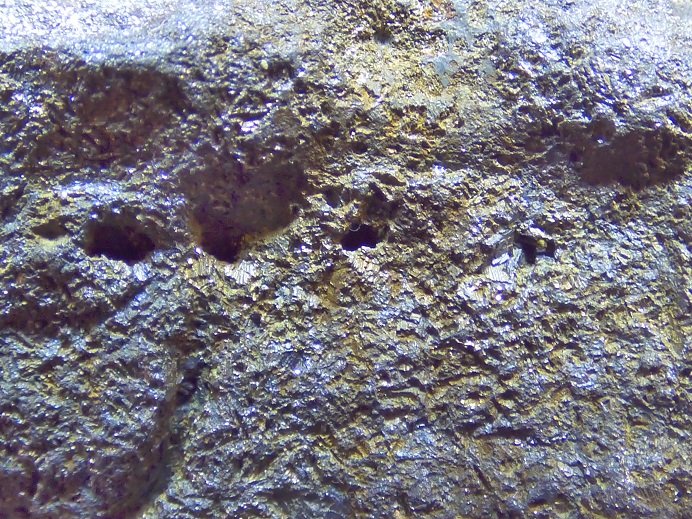
Any suggestions would be much-appreciated!
Cheers,
Dan
Long time lurker, first time poster.
I enjoy trying to identify the various minerals etc presented here from time to time (I'm usually incorrect) and I was wondering if anyone wants to have a stab at identifying some of my own unidentified pieces from the Illawarra region?
Found near a local beach, I'm thinking this first one may be rhyolite. The stone is very hard.

Also found near a local beach, I call this one my choc-honeycomb stone (the cabbed portion looks nearly edible!). Also quite hard - possibly a jasper?

I suspect that this very soft piece is an interesting variation on one of the plentiful mineral concretions found about the Illawarra escarpment (where it was found).


This one I'm calling for a bornite style stone. It was found high up a local creek and fits nicely in the palm of my hand.


Any suggestions would be much-appreciated!
Cheers,
Dan
Danbob
Danny
G'day,
I haven't done a streak test on any of these stones however, I always conduct a very general hardness test on those that I plan to cab, using a quartz point.
I could not scratch the first stone on any part of it's surface, however on the second stone I was able to achieve a light scratch on the yellow portions and a very definite scratch on the brown areas. The specific gravity of both finished cabochons is 2.61 if this is of any interest.
With regards to the other two pieces - the hollow stone appears to be sedimentary and is very soft. It has a similar appearance to our local mineral concretions yet I have never seen anything of this shape - including any similar fossils. The last stone is definitely metallic but does not attract a magnet.
I do understand that it is extremely difficult to correctly identify any mineral based solely on photographs, so happy for any general info regarding these stones.
Cheers...
I haven't done a streak test on any of these stones however, I always conduct a very general hardness test on those that I plan to cab, using a quartz point.
I could not scratch the first stone on any part of it's surface, however on the second stone I was able to achieve a light scratch on the yellow portions and a very definite scratch on the brown areas. The specific gravity of both finished cabochons is 2.61 if this is of any interest.
With regards to the other two pieces - the hollow stone appears to be sedimentary and is very soft. It has a similar appearance to our local mineral concretions yet I have never seen anything of this shape - including any similar fossils. The last stone is definitely metallic but does not attract a magnet.
I do understand that it is extremely difficult to correctly identify any mineral based solely on photographs, so happy for any general info regarding these stones.
Cheers...
Welcome Db, I think the last one was slag.
Mackka
Mackka
- Joined
- May 1, 2014
- Messages
- 1,958
- Reaction score
- 2,530
The first one does bear some superficial resemblance to the "rainforest jasper" from Mount Hay up here in Central QLD - rhyolite filled with little agate nodules.
Any rhyolite volcanics in the area you found it?
Any rhyolite volcanics in the area you found it?
Danbob
Danny
Thanks for the replies.
I have just broken off a portion of that last stone. Definitely metallic, scratches with quartz, dark grey streak and specific gravity of 2.98. The stone also has a lovely silver/gold lustre. I would like to think that it is not slag but I am a realist - this was found in American Creek below Mount Kembla - with the nearby rail line essentially built on the stuff!
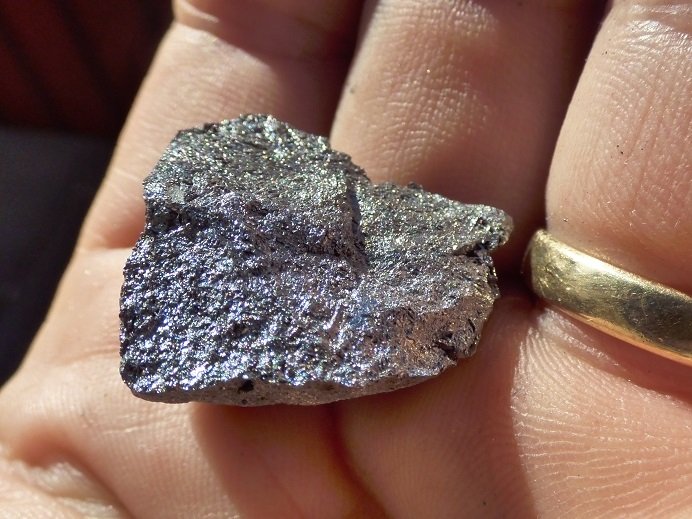
I also checked the first two stones on the streak plate - with both appearing colourless.
Cheers...
I have just broken off a portion of that last stone. Definitely metallic, scratches with quartz, dark grey streak and specific gravity of 2.98. The stone also has a lovely silver/gold lustre. I would like to think that it is not slag but I am a realist - this was found in American Creek below Mount Kembla - with the nearby rail line essentially built on the stuff!

I also checked the first two stones on the streak plate - with both appearing colourless.
Cheers...
Danbob
Danny
Sorry Lefty, I missed your reply.
That stone was found close to a basalt headland near Kiama and there are literally thousands of similar stones just in the one spot. Definitely a volcanic area but I have never seen any specific mention of rhyolite.
That stone was found close to a basalt headland near Kiama and there are literally thousands of similar stones just in the one spot. Definitely a volcanic area but I have never seen any specific mention of rhyolite.
I'll buy slag. I would have thought that the first two would be harder than your streak plate - so that the streak plate would powder not the sample. And do you mean white? The first may be rhyolite, then jasper. And the concretion may be limonite around a tree root. Not sure you need much help.....
Similar threads
- Replies
- 8
- Views
- 7K
- Replies
- 76
- Views
- 21K
- Replies
- 40
- Views
- 12K


